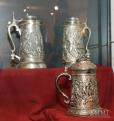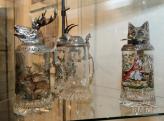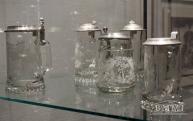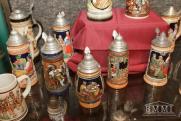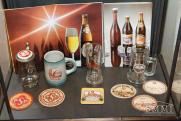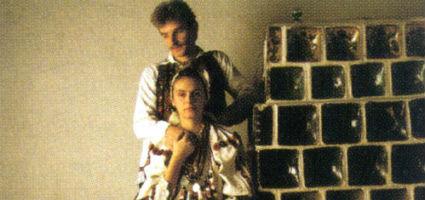 |
Address: 7621, Pécs Rákóczi utca 15.
Phone number: (72) 315-629
E-mail: jpm@jpm.hu
Opening hours: Tue-Sat 10-16
|
|
Ticket for adults
|
350 HUF
|
|
|
Ticket for students
|
180 HUF
|
|
|
Group ticket for students
(over 15 people)
|
130 HUF
|
/ capita
|
|
Ticket for pensioners
|
180 HUF
|
|
|
Guide
|
3000 HUF
|
|
|
Guide
|
5000 HUF
|
Hungarian people do not clink glasses before drinking because after the failure of the War of Independence and the execution of the 13 Martyrs of Arad, the Austrians clinked their glasses filled with beer.
Beer is one of the great inventions of humanity, and it is not an accident that the’ liquid bread’ has been appraised in most cultures for 7000 years. It is the national drink in many countries. Can we imagine Czech or German people without beer? Poets herald the virtue of beer, politicians talk about it. Shortly: we could hardly live without beer.
The first people to make beer were the Sumerians 7000 years ago. They esteemed it so high that those working in breweries were exempt from military service. The phrase ‘liquid bread’ is also Sumerian. They brew beer with sour bread, then flavoured it with ginger, cinnamon or bay leaf.
It was the Babylonians who brew beer of grain. The famous stone tablets of Hammurabi mention beer brewing: ‘everybody who serves beer mixed with water must be drowned…’ In Egypt, we found a grave with an inscription saying that beer was sold in bottles in those days; moreover, sometimes it was buried with the deceased.
In Europe, it was primarily the Celts and Germans who enjoyed the drink they made of wheat and honey, they called it ’alo’. Later on beer became the national drink of chiefly those countries where wine production had no traditions. In the Lowlands and the northern states, almost all villages had a brewery, where brewing beer turned into a real form of art. Those days, however, beer had no foam on top. It only became characteristic of beer after it was first made of hops in the 16th century. It was also the foam that entailed the beer loosing its sweetish taste and became bitter.
Ever since beer is made of hops, significant changes did not take place in brewing technology, It is still made of malt, water and hops. The law on cleanliness issued in 1516 regulated what additives beer could contain. Earlier, hard eggs were used, ox bile, beech ash, parsley, chalk dust, walnut tree leaves and anise, too, to add to beer.
Today, beer is still brewed based on the technology that was developed in the 16th century. The body of beer is the barley, while the soul is the hops.
Pécs has a long history of beer brewing, which means that the museum has a large collection of photos and documents on beer brewing.
The first brewery opened in 1848 in Pécs. We would like to commemorate this with our exhibition by showing beer cups and jugs. These were made of glass, ceramics, metal or clay. Their size and capacity also varied, as well as the motifs on them.

